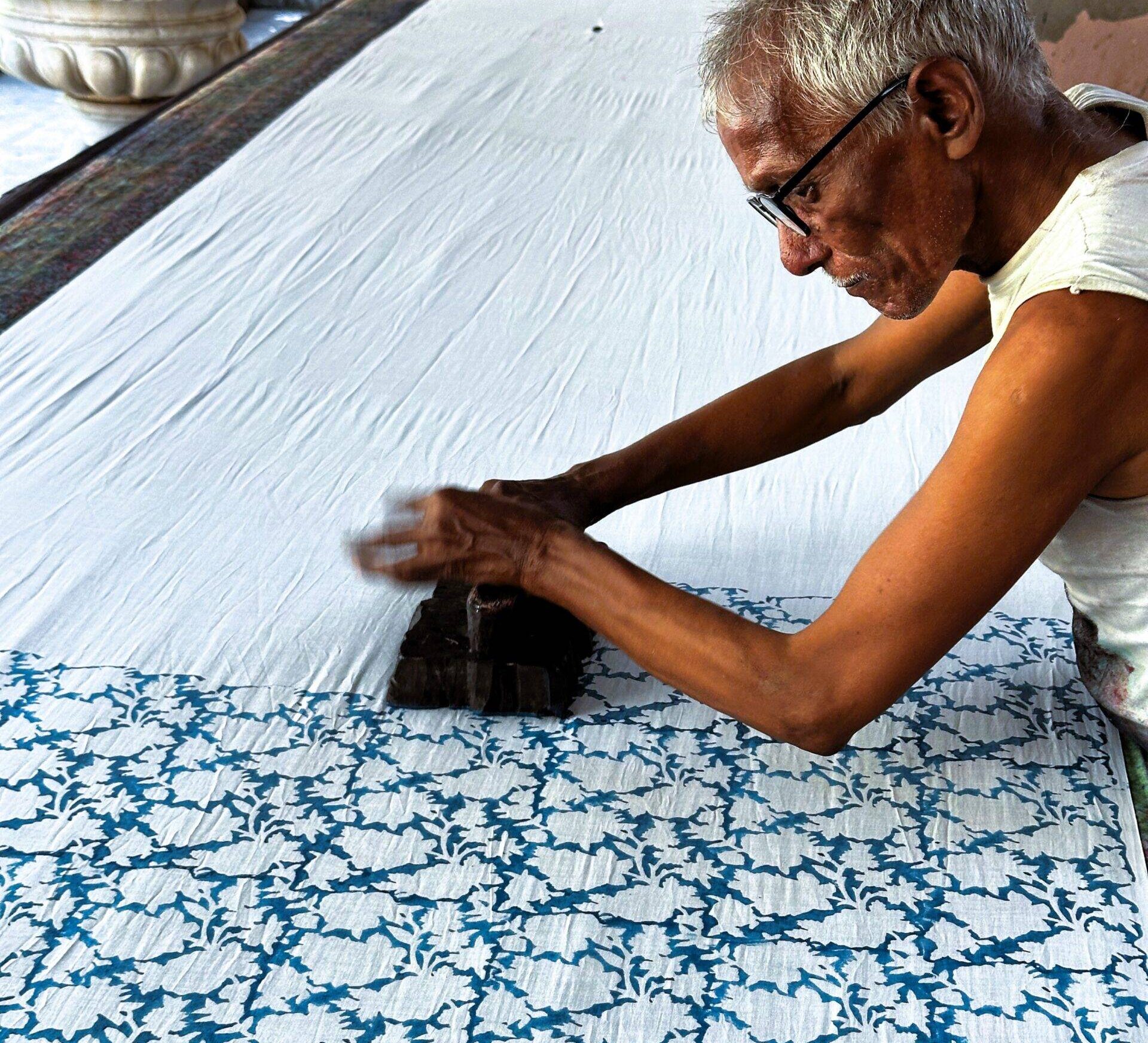Introduction To Chikankari: Introduction To Lucknow Chikankari
Chikankari, Lucknow’s embroidery, is a delicate and intricate form of hand embroidery that has been passed down through generations, becoming synonymous with the rich cultural heritage of the city. Rooted in the heart of Lucknow, Chikankari holds a significant place in the textile traditions of India.
Brief Overview Of What Chikankari Is And Its Significance In Lucknow
Chikankari, deriving its name from the Persian word “chikan,” meaning embroidery, is characterized by its fine, white threadwork on sheer fabrics like muslin, silk, or chiffon. It involves various stitching techniques, creating beautiful patterns and motifs that adorn garments and textiles. In Lucknow, Chikankari is not just a craft; it’s a reflection of the city’s refined taste and artistic flair, deeply ingrained in its cultural fabric.
Historical Origins And Cultural Significance
The history of Chikankari in Lucknow dates back to the Mughal era, where it flourished under the patronage of emperors and nobles. Over time, it became an integral part of Lucknow’s cultural identity, symbolizing grace, elegance, and sophistication. Today, Chikankari is not just a craft; it’s a living legacy that celebrates the city’s artistic heritage and craftsmanship.
The Art Of Creation: Techniques And Materials
Chikankari artisans employ a range of traditional techniques, including ‘taanka,’ ‘bakhiya,’ ‘hool,’ and ‘phanda,’ each requiring precision and skill. These techniques are executed using specialized needles and threads, typically silk or cotton, to create intricate designs on fabric. The choice of fabric also plays a crucial role, with artisans preferring lightweight, breathable materials that complement the delicate nature of Chikankari.
Designs And Patterns: A Reflection Of Lucknow Aesthetics
Lucknow Chikankari is renowned for its timeless motifs and patterns, inspired by nature, architecture, and everyday life. Common motifs include ‘paisleys,’ ‘florals,’ ‘peacocks,’ and ‘geometric patterns,’ each carrying symbolic meanings and cultural significance. These designs not only enhance the beauty of Chikankari but also tell stories of tradition and heritage.
Notable Artisans And Workshops
Lucknow boasts a rich pool of talented artisans who have dedicated their lives to mastering the art of Chikankari. From master craftsmen to young enthusiasts, each contributes to the rich tapestry of Lucknow’s embroidery heritage. Renowned workshops like ‘Ada Chikan’ and ‘Zardozi’ are known for their exceptional craftsmanship and commitment to preserving the authenticity of Chikankari.
Applications And Varieties Of Chikankari Products
Chikankari transcends beyond garments, finding its way into various products like vases, boxes, trays, and even home furnishings. Its versatility allows for innovative adaptations, blending traditional craftsmanship with contemporary designs. Whether it’s a classic Chikankari saree or a modern embroidered clutch, each piece embodies the timeless elegance of Lucknow’s embroidery.
Economic Impact And Sustainability
Chikankari plays a significant role in the local economy, providing livelihoods to thousands of artisans and craftsmen across Lucknow and its surrounding regions. However, the craft faces challenges in today’s fast-paced world, including competition from machine-made imitations and fluctuating market demands. Despite these challenges, efforts are underway to promote sustainable practices and ensure the longevity of Chikankari.
Preservation And Modern Challenges
Preserving the authenticity of Chikankari is paramount in the face of modern challenges. Artisan communities, government initiatives, and NGOs are working together to safeguard traditional techniques and empower artisans through skill development programs and market access opportunities. However, more needs to be done to address issues like exploitation, lack of recognition, and dwindling interest among the younger generation.
How To Identify Authentic Lucknow Chikankari
Distinguishing genuine Chikankari from imitations requires a keen eye for detail. Look for fine, evenly spaced stitches, intricate motifs, and subtle variations in thread thickness. Authentic Lucknow Chikankari often bears the hallmark of skilled craftsmanship, with each stitch reflecting the artisan’s dedication and expertise.
Experiencing Chikankari Craft In Lucknow
To truly appreciate the artistry of Chikankari, consider visiting Lucknow’s bustling markets and heritage workshops. Places like Chowk, Hazratganj, and Aminabad offer a glimpse into the city’s vibrant textile culture, where you can witness artisans at work and even try your hand at embroidery under their guidance.
DIY: Trying Your Hand At Chikankari
For those inspired to delve into Chikankari themselves, simple DIY projects provide a great starting point. From embellishing a scarf to stitching a motif onto a plain shirt, there are endless possibilities to explore. Remember to start with basic stitches and gradually build your skills through practice and experimentation.
Conclusion: The Enduring Legacy Of Lucknow Chikankari
In conclusion, Chikankari stands as a testament to Lucknow’s enduring legacy of craftsmanship and creativity. Its timeless beauty transcends borders, captivating hearts and minds across the globe. As we celebrate this exquisite art form, let us also commit to preserving its heritage for generations to come.
FAQ
Q: IS CHIKANKARI ONLY DONE IN WHITE THREAD?
A: While traditional Chikankari is primarily done in white thread, artisans also experiment with colored threads to create vibrant designs.
Q: HOW LONG DOES IT TAKE TO COMPLETE A CHIKANKARI PIECE?
A: The time taken to complete a Chikankari piece depends on its complexity and size, ranging from a few days to several months for intricate designs.
Q: CAN CHIKANKARI BE DONE BY MACHINES?
A: While machine-made imitations exist, authentic Chikankari is handcrafted by skilled artisans using traditional techniques.


